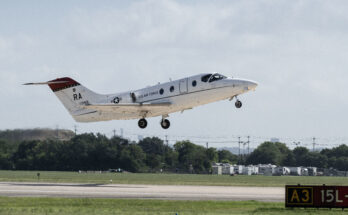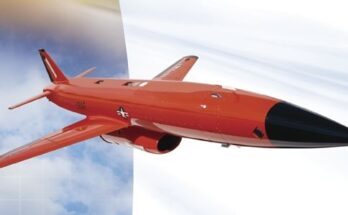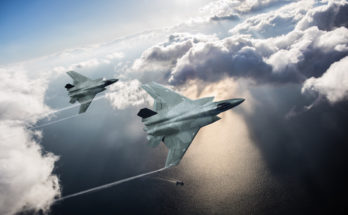
U.S. Naval Forces Central Command announced last week that Iranian Islamic Revolutionary Guard Corps Navy (IRGCN) vessels shined a laser multiple times at a U.S. Marine Corps AH-1Z helicopter in an “unsafe and unprofessional” manner.
The helicopter, assigned to the 26th Marine Expeditionary Unit (MEU) on board USS Bataan, was reportedly conducting routine flight operations in international airspace in the Arabian Gulf when IRGCN vessels shined a laser at its crew.
A U.S. Naval Forces Central Command spokesman said, “Fortunately, no injuries were reported and the aircraft was not damaged.” The 26th MEU and the Bataan deployed from Norfolk, Virginia, in July to support freedom of navigation and commerce in the Arabian and Persian Gulf regions. This recent incident comes amid Iranian escalatory efforts to disrupt international shipping operations. Earlier in July, the Iranian Navy had attempted to seize control of two oil tankers but backed down after U.S. Navy vessels intervened.
Laser strikes at aircraft are a serious threat to airborne crews, as directed energy beams can cause vision injury, which can jeopardize the safe operation of aircraft. Typically, military flight crews are grounded from flight until cleared by a medical screening after being exposed to a laser. Lasering aircraft is a widely recognized dangerous and offensive act that is a federal crime in the U.S.
Iran’s unsafe actions represent a pattern of unprofessional aerial incidents against U.S. military aircraft by foreign actors. Earlier this year, U.S. aircraft, manned and unmanned, experienced aggressive interactions in international airspace by both Chinese and Russian aircraft. Acts like these represent a growing safety of flight threat to all nations and aircraft operating in internationally recognized free airspace.
A former naval officer and helicopter pilot, Jon covers a range of Forecast International reports and products, drawing on his 10-year background in military aviation, operations, and education. His previous military assignments include multiple overseas deployments supporting operations in the Arabian Gulf, NATO exercises, and humanitarian missions. Jon’s work is also influenced by his time as a former Presidential Management Fellow and international trade specialist at the Department of Commerce.
Before joining Forecast International, Jon also served as an NROTC instructor and Adjunct Assistant Professor at the University of Texas, where he taught undergraduate courses on naval history, navigation, defense organization, and naval operations and warfare. A lifelong reader and learner, his academic and professional interests include aviation, political and military history, national defense and security, and foreign area studies.




